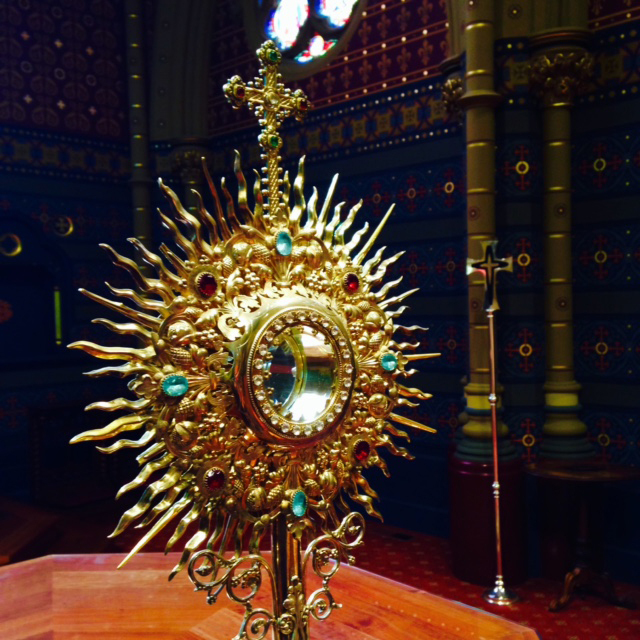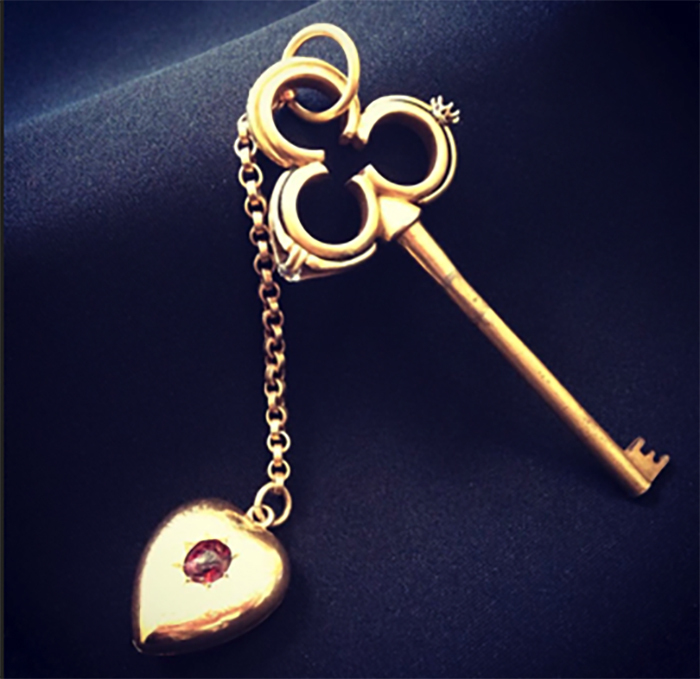This silver ciborium was commissioned by the sisters in 1879. It was crafted by the prominent Geelong silversmith Edward Fischer.
Born in Vienna in 1828, Fischer arrived in Victoria in the 1850s and by 1857 had established his business in Geelong. Although demand for his work was initially slow, by the 1860s Fischer's reputation had grown and he began to receive orders for items such as jewellery, tableware and ecclesiastical items as well as presentation pieces. One of the most important commissions for Edward Fischer was for the Melbourne Racing Club. From 1861 when the first Melbourne Cup was run, a trophy made in England had been presented to the Cup winner. With the increase in population and circulation of money created by the gold boom, there was a rise in patriotic feeling and identity and the Melbourne Racing Club decided that a locally made trophy would be more appropriate. In 1865, Fischer received the commission to design and manufacture the first locally produced Melbourne Cup.
With the honour and prestige this commission accorded to Fischer, he received many more requests for trophies from various sporting clubs throughout Geelong. The most significant in regard to his reputation was the commission to produce the Geelong Cup. For more than a decade Fischer designed and produced the Geelong Gold Cup, with shapes varying from richly engraved claret jugs and champagne glasses to more plainly decorated urns. All proved popular with the public.
As well as manufacturing high quality silver and gold items, Fischer's shop also functioned as a watchmaker's shop with "every description of repairing done to all articles which come under the notice of the goldsmith". The public was also invited to inspect his premises and workshop, with the effect that his business became a household name in Geelong.
In 1891 however, Fischer sold his business and moved to Melbourne, opening a shop in Collins St with his son Harry. Edward Fischer died in 1911, and by 1904 Harry was running the business solely until 1916.

In 1905, Mother M. Evangelist Doogan, then Superior of the Newtown Convent, commissioned William Tappin of Reid Smart and Tappin to paint and beautify the sanctuary. Tappin engaged Estonian craftsman Jaan (John) Kannuluik to carve and build a a Gothic style high altar of English oak. The Advocate gave a glowing account of the work and claimed "the altar is a veritable triumph of the wood-carvers art". Installed in the altar were six beautiful hand painted oil panels of angels.
The panels were removed from the altar in the 1960s when the altar was remodelled after Vatican II. For more than 50 years it was thought the angels were lost but they had lain hidden on top of an old cupboard on the upper floor of the old Convent.
The angels were found - or chose to be found - the day the Chapel restoration was completed. The angels have been rehung in the newly created narthex outside the Chapel doors.
 |  |  |  |  |  |
Pressed and cast metal with 17 gem stones.
A Monstrance, sometimes also called ostensorium, in the Roman Catholic church and some other churches, is a vessel in which the eucharistic host is carried in processions and is exposed during certain devotional ceremonies. Both names are derived from Latin words (monstrare and ostendere) that mean “to show.”
First used in France and Germany in the 14th century, when popular devotion to the Blessed Sacrament developed, monstrances were modelled after pyxes or reliquaries, sacred vessels for transporting the host or relics. The host was shown in a glass cylinder mounted on a base and surmounted by some sort of metal crown.
In the 16th century the monstrance took its present shape: a circular pane of glass set in a cross or surrounded with metal rays. The host is placed in a holder called a lunette, which fits into an opening behind the glass.
This monstrance was made in France and given as a gift to the Sisters of Mercy from the pupils of the Sacred Heart Boarding School.

One of Sacred Heart College’s most beautiful, touching and personal treasures is the original tabernacle key from around 1907. Decorating the trefoil are three women’s rings; a late Victorian wedding ring with six rose cut diamonds, a Victorian dress ring and an Edwardian solitaire diamond ring. The chain and locket hanging from the key are 15ct and there is a garnet in the centre of the heart shaped locket which is inscribed with the Sacred Heart of Jesus.
The jewellery is believed to have come from a Sister of Mercy, possibly as part of a ‘dowry’ when she entered the convent. Sisters took a vow of poverty and other than their habits and rosaries, had no other personal possessions. These may have been inherited from her mother.
The rings and locket were added to the key about 1920, by T. Gaunt & Co, who had a shop on the corner of the Royal Arcade in Bourke St, Melbourne. Started in 1856 by Thomas Gaunt, who was well known for his chronograph at Flemington, but most famously his clock and figures Gog and Magog which still grace the Royal Arcade. Thomas also made the turret clock that still stands at the former Geelong West Town Hall.
